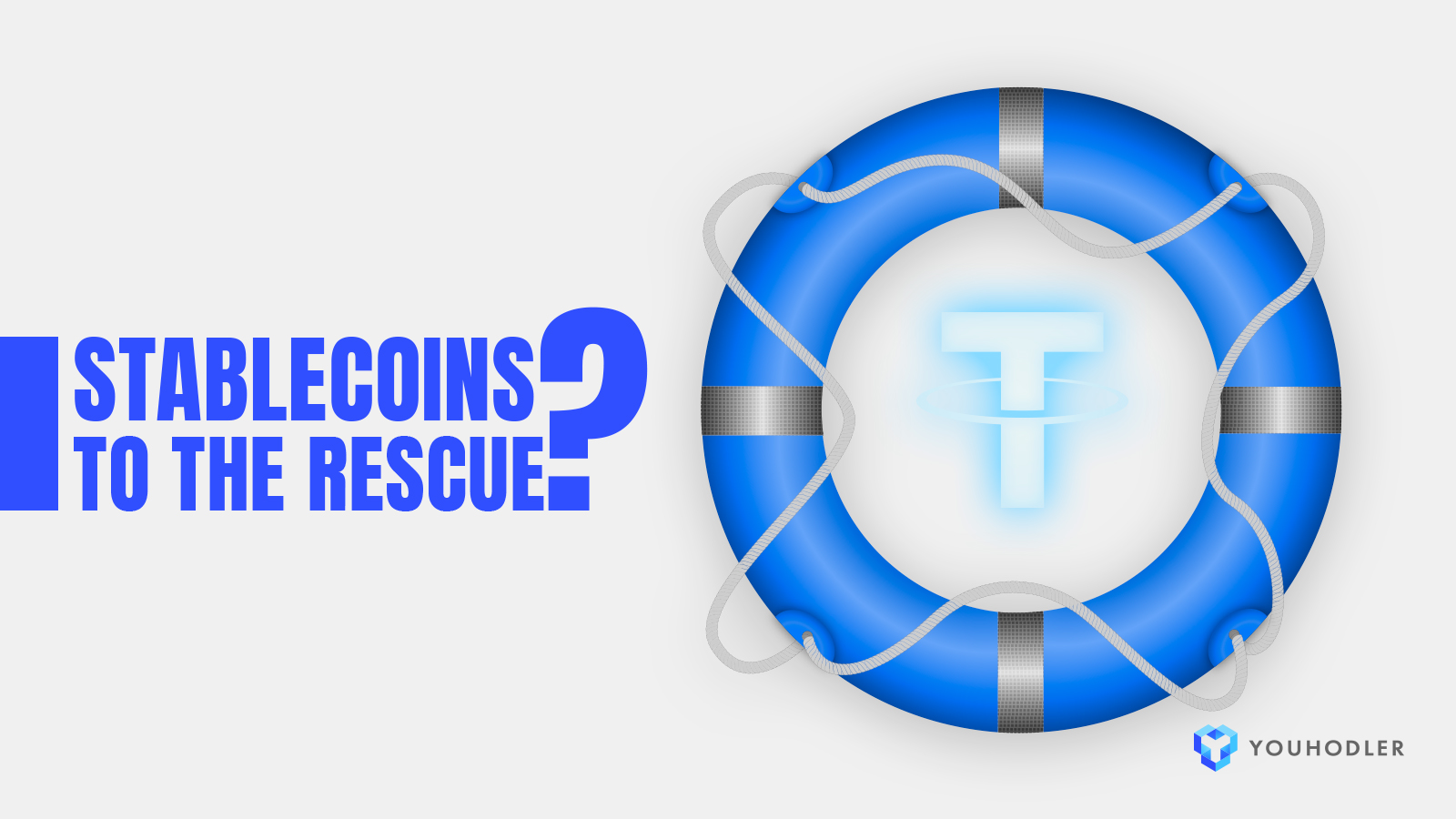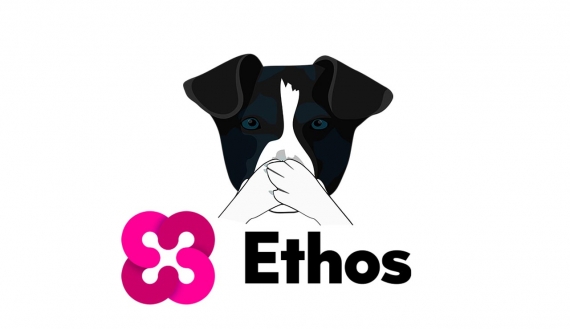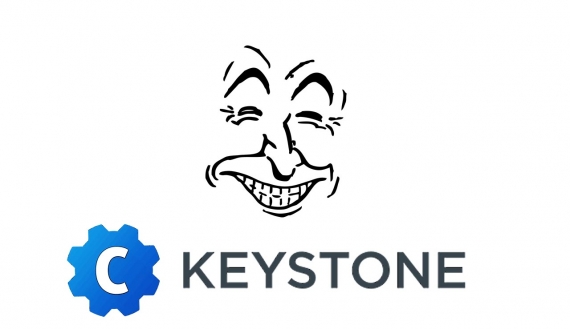
How Will Stablecoins Stack Up in the Post-COVID-19 Era?
The coronavirus crisis has hammered the financial markets and there are now fears that the pandemic might cause a deep-cutting global economic crisis. On the extreme end, some economists are even predicting that it could be worse than the Great Depression should the strict lockdowns measures continue for months. One byproduct of the economic uncertainty created by this is that it has caused massive movement in the financial markets.
Stablecoins moving to fiat
In the traditional markets, there is a capital flight into the USD and USD-backed assets. The same is mirrored in the crypto market which is experiencing unprecedented flight to safety from the more volatile and risky cryptocurrencies into the USD-backed stablecoins which are so far holding their own against the depressing economic reality on the back of strong demand for the USD, particularly in the emerging markets whose currencies are currently weakening against the dollar. In such emerging markets, the stablecoins provide the shortest rails through which asset owners can dollarize. This is especially true in markets such as Brazil, China or Russia.
The U.S. dollar has been at the center of this capital flight from the more volatile asset classes thanks in part to the fed funds rates which until March this year, stood at 1.25% (the rate has since been cut to zero). Even the asset classes that have traditionally been regarded as safe are shifting their assets to the USD to de-risk. In mid-March 2020, Dow Jones plunged nearly 3000 points, the biggest plunge since 1987. Although it has rallied somewhat over the past three weeks, the index along with the broader stocker markets are expected to fall by 50% as the COVID-19 crisis deepens in the U.S.
Crypto asset demand has also been driven by the physical reality of travel restrictions and coronavirus quarantines which make it difficult to move large amounts of cash. Having dollars on the blockchain confers lots of advantages including privacy and permissionless access to vast amounts of money. As a result, stablecoins are serving as substitutes for cash at least in the short term.
For a long time, crypto-assets were regarded as the last vanguard against an unstable financial system. For a moment, cryptos seemed like the Holy Grail in the wake of the sub-prime mortgage crisis of 2008.
They were thought of as somewhat isolated and therefore immune to the currents swaying the financial markets. With the emergence of the dollar-backed stablecoins which are pegged to the USD as a risk protection tool, this is no longer the case. The dollar-backed blockchains now form the third-biggest crypto assets behind bitcoin (BTC) and ether (ETH).
The stablecoin asset base is already larger than XRP and bitcoin cash (BCH) and their transaction volumes are approaching the bitcoin levels. The collateralizing to the dollar has enabled stablecoins to minimize the price volatility that is already being seen in other crypto assets on the fears of an economic downturn which will likely be triggered by the pandemic. They are the last of the asset classes that are still managing to scrape off some growth.
Impact of Coronavirus on Legacy Cryptos and Market
Even before the peak of the coronavirus crisis, cryptocurrencies were already trending at historic lows. Most of the major crypto assets are now at the same price points that they stood at just about a year ago. By March 2020, most of the bullish gains in crypto assets that had been realized in the last quarter of 2019 and the first quarter of 2020 had already been erased.
The broader legacy markets have also seen sharp dips. The ASX 200 fell 20% in March and many US stocks are also seeing similar dips. Oil price is currently trending at the lowest prices in two decades while the price of gold, traditionally a safe-haven asset, is also trended down in March although it rallied over the Easter Week.
Benefits of Unloading to Stablecoins During Economic Downturns
Stablecoins are currently the only asset class that have so far held its own in the COVID-19 crisis. Because their values are pegged to the USD and other fiat currencies such as the Chinese Yuan, they have been trending upwards as the demand for the USD increases thereby providing traders with a safe option for storing assets. Between February and March, the Binance market cap alone doubled in value.
Stablecoins offer individual investors, institutional investors and market makers various advantages. Unloading into them is less costly than unloading your assets into USD. They, therefore, provide traders and investors a cheaper option to convert assets while also offering very easy liquidity that would ordinarily take several hours or days to process through the traditional payment rails. Investors can convert their non-backed assets into stablecoins almost instantly. Stablecoins free you from the reliance on the fast economy.
Once the assets have been converted into stablecoins, they are safeguarded from the sudden dips in the prices of cryptocurrencies which are still highly vulnerable to macro-economic trends and global crises. Even some of the top crypto exchanges are now adding stablecoins to their portfolios to enable investors to trade new stable currencies.
Looking to the Post-COVID-19 Future
Being dollar-backed assets, stablecoins are also susceptible to the monetary policy changes affecting the dollar. Stablecoins make money by investing their reserves. This is usually in the form of buying AAA-rated fixed income securities such as the U.S. government bonds or lending to commercial banks. By early 2020, the biggest stablecoins had a total of $5.5 billion in customer funds. If they lend this at an interest rate of 1.25%, they can collectively generate $68.75 million in revenues.
What will happen now that the fed funds rate has been cut to zero? The upcoming recession which is triggered by coronavirus has seen the Federal Reserve increasingly making interventions in the monetary policy to cushion the economy. These changes, such as the cuts in fed fund rates will affect all the commercial interest rates. This will have a direct financial impact on coin issuers such as stablecoins who will be making less money going forward should the fed fund rate reduce even further. If the rates go negative like in Japan and Europe, coin issuers will even have to pay to deposit which will literally wipe out their margins.
This could see a reduction of revenues for stablecoin operators which might subsequently be forced to pass the costs to customers or make riskier investments such as corporate bonds to meet their operational costs. The crisis could foment a risky dynamic that could spell trouble for the stablecoin ecosystem.
Not all stablecoins generate funds by investing their reserves, though. Some operators such as Tether charge a fee (now at 0.1%) on the deposits and redemptions made by customers.
If the COVID-19 crisis continues to bite, some stablecoin operators are likely to deploy new business models to shore up their finances and survive in the new zero-rates reality. The stablecoin USDC (whose market cap has now grown to more than $700 million), for example, is morphing into a digital commercial bank that offers customers an API for payments, wallets, business accounts as well as marketplaces.
In the shorter term, stablecoin operators will be creating and charging adjacent businesses churned out of the stablecoins. This would be easier to implement than passing costs on the retail users or building from scratch new business models that have no proven viability. For example, they could inflate the token supply relative to the deposits to create a kind of usage tax. They could also implement additional transaction fees on their platforms. PAX has already implemented this for its gold-backed tokens.
In the post-COVID-19 era, we are also likely to see centralized exchanges taking center stage as they could shore up the wrapped tokens.
Stablecoins still have a bright future in spite of the expected short-term decline in their revenue streams. The current capital flight into stablecoins will have some kind of knock-on effect and attract more money into these assets. The opportunity cost of holding stablecoins is practically zero; a factor that is also likely to attract new investments. In the near future, we expect to see more cash inflows from investment vehicles with negative interest rates as well as from emerging markets grappling with weaker currencies relative to the USD. There is also the opportunity for new and sustainable business models but this is a long-range proposition. As long as there is trust in the stablecoin ecosystem, the opportunities are limitless.







